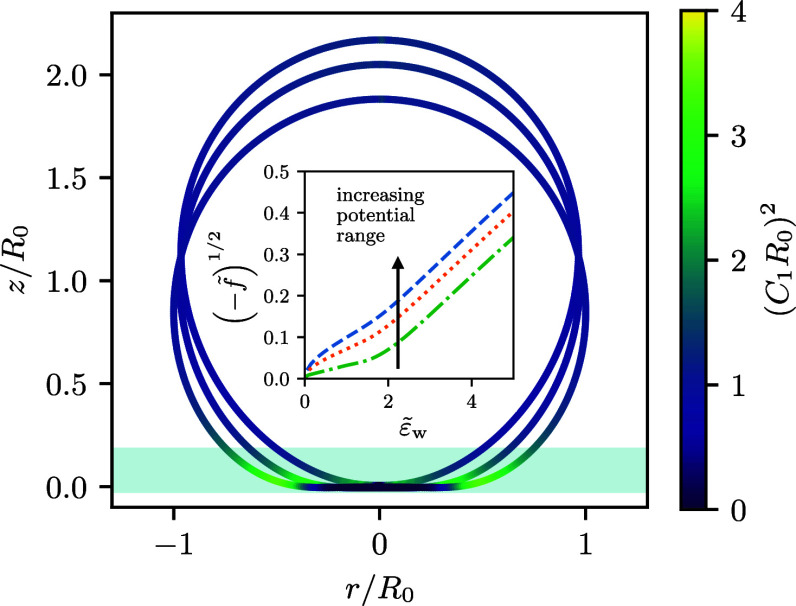- Record: found
- Abstract: found
- Article: found
Role of Interaction Range and Buoyancy on the Adhesion of Vesicles

Read this article at
Abstract

Vesicles on substrates play a fundamental role in many biological processes, ranging from neurotransmitter release at the synapse on small scales to the nutrient intake of trees by large vesicles. For these processes, the adsorption or desorption of vesicles to biological substrates is crucial. Consequently, it is important to understand the factors determining whether and for how long a vesicle adsorbs to a substrate and what shape it will adopt. Here, we systematically study the adsorption of a vesicle to planar substrates with short- and long-range interactions, with and without buoyancy. We assume an axially symmetric system throughout our simulations. Previous studies often considered a contact potential of zero range and neutral buoyancy. The interaction range alters the location and order of the adsorption transition and is particularly important for small vesicles, e.g., in the synapse. Whereas even small density differences between the inside and the outside of the vesicle give rise to strong buoyancy effects for large vesicles, e.g., giant unilamellar vesicles, as buoyancy effects scale with the fourth power of the vesicle size. We find that (i) an attractive membrane-substrate potential with nonzero spatial extension leads to a pinned state, where the vesicle benefits from the attractive membrane-substrate interaction without significant deformation. The adsorption transition is of first order and occurs when the substrate switches from repulsive to attractive. (ii) Buoyancy shifts the transversality condition, which relates the maximal curvature in the contact zone to the adhesion strength and bending rigidity, up/downward, depending on the direction of the buoyancy force. The magnitude of the shift is influenced by the range of the potential. For upward buoyancy, adsorbed vesicles are at most metastable. We determine the stability limit and the desorption mechanisms and compile the thermodynamic data into an adsorption diagram. Our findings reveal that buoyancy, as well as spatially extended interactions, are essential when quantitatively comparing experiments to theory.
Related collections
Most cited references41
- Record: found
- Abstract: not found
- Article: not found
Improved tangent estimate in the nudged elastic band method for finding minimum energy paths and saddle points
- Record: found
- Abstract: not found
- Article: not found
Wetting and spreading
- Record: found
- Abstract: not found
- Article: not found